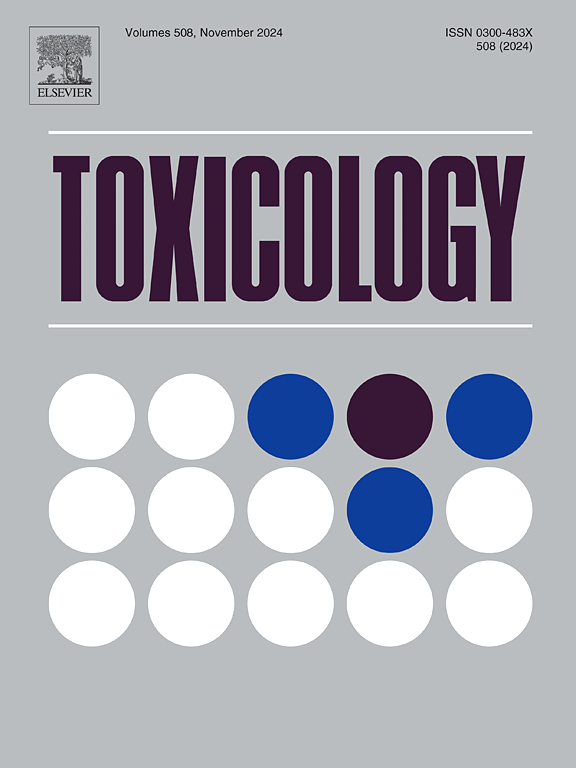Hepatic and extra-hepatic metabolism of propylene glycol ethers in the context of central nervous system toxicity
IF 4.8
3区 医学
Q1 PHARMACOLOGY & PHARMACY
引用次数: 0
Abstract
Propylene glycol ethers (PGEs) are mixtures of an α-isomer and a β-isomer (β-PGE) that is oxidized via alcohol dehydrogenase (ADH) and aldehyde dehydrogenase (ALDH) to potentially neurotoxic alkoxy propionic acids (β-metabolites). While the liver is the primary organ for ADH- and ALDH-mediated metabolism, the contribution to the metabolism of β-PGEs by the blood-brain barrier (BBB) and the brain remains unknown. Here, we aimed to assess the neurotoxic potential of PGEs after systemic exposure by (1) comparing 3D HepaRG and human liver subcellular fraction (S9) for the in vitro determination of the kinetics of hepatic metabolism for β-PGEs, (2) evaluating the BBB-permeability of PGEs and β-metabolites, (3) determining the presence of ADH1 and ALDH2 and the extent of metabolization of β-PGEs in the BBB and brain. The results show that 3D HepaRG and S9 served as competent systems to estimate the enzymatic kinetic (clearance) for β-metabolite formation. We observed that PGEs and the β-metabolites could cross the BBB, based on their permeance across a cellular barrier consisting of the hCMEC/D3 cell line. Metabolic enzymes were not exclusive to the liver, as expression of ADH1 and ALDH2 was demonstrated using RT-qPCR, Western blot, and immunostainings in the BBB in vitro models and in BrainSpheres. Furthermore, LC-MS/MS quantification of the β-metabolites in all in vitro models revealed that 3D HepaRG had a similar metabolic capacity to primary human hepatocytes and that the amount of β-metabolite formed per protein in the BBB was approximately 10–30 % of that in the liver. We also demonstrated active metabolism in the BrainSpheres. In conclusion, the hepatic in vitro models provided data that will help to refine toxicokinetic models and predict internal exposures, thereby supporting the risk assessment of PGEs. In addition, the high permeance of the PGEs and the β-metabolites across the BBB increases the plausibility of neurotoxicity upon systemic exposure. This is further supported by the presence of active ADH1 and ALDH2 enzymes in the BBB in vitro systems and in BrainSpheres, suggesting metabolite formation in the central nervous system. Hence, we suggest that BBB-permeance and extra-hepatic metabolism of the β-PGEs may contribute to the neurotoxicity of PGEs.
求助全文
约1分钟内获得全文
求助全文
来源期刊

Toxicology
医学-毒理学
CiteScore
7.80
自引率
4.40%
发文量
222
审稿时长
23 days
期刊介绍:
Toxicology is an international, peer-reviewed journal that publishes only the highest quality original scientific research and critical reviews describing hypothesis-based investigations into mechanisms of toxicity associated with exposures to xenobiotic chemicals, particularly as it relates to human health. In this respect "mechanisms" is defined on both the macro (e.g. physiological, biological, kinetic, species, sex, etc.) and molecular (genomic, transcriptomic, metabolic, etc.) scale. Emphasis is placed on findings that identify novel hazards and that can be extrapolated to exposures and mechanisms that are relevant to estimating human risk. Toxicology also publishes brief communications, personal commentaries and opinion articles, as well as concise expert reviews on contemporary topics. All research and review articles published in Toxicology are subject to rigorous peer review. Authors are asked to contact the Editor-in-Chief prior to submitting review articles or commentaries for consideration for publication in Toxicology.
 求助内容:
求助内容: 应助结果提醒方式:
应助结果提醒方式:


